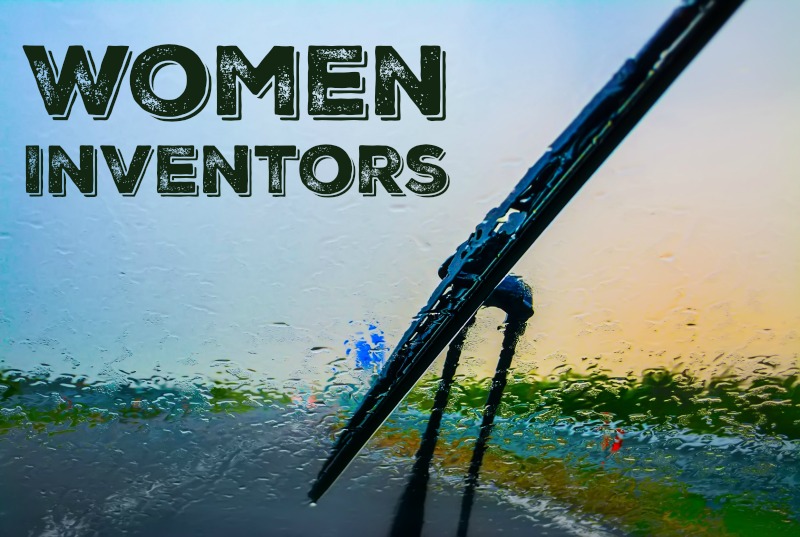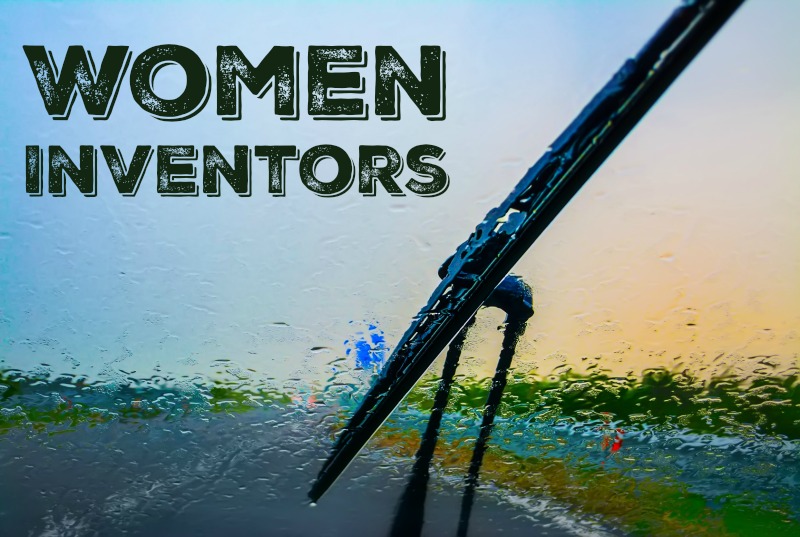There have always been women inventors…even if they’ve been overlooked by the history books. Here are a few you may not have heard of.
Mary Anderson
Invention: Windshield wipers
Background: In 1903 Anderson, an Alabaman, took a trip to New York City. One snowy afternoon she decided to tour the city by streetcar, but instead of sightseeing found herself staring at the streetcar conductor, who had to keep stopping to wipe the snow off his windshield.
On the spot, Anderson made a drawing in her sketchbook of a device consisting of a lever that “activated a swinging arm that mechanically swept off the ice and snow” from the windshield.
She got her patent the following year; ten years later windshield wipers were standard equipment on automobiles.
Donna Shirley
Invention: Sojourner Mars Rover
Background: In 1991 Shirley, an aerospace engineer, was appointed manager of NASA’s Mars Explorer Program. Her team was charged with developing the rover vehicle that would go to Mars aboard the unmanned Pathfinder spacecraft. The rover was to be about the size of a pickup truck, with rockets to blast it off the surface of Mars and back to the Pathfinder for its return to Earth.
They’d already built a one-eighth-scale prototype; now they were using it to design the full-scale rover. There was just one problem: sending a truck-sized rover to Mars and then returning it to Earth was too expensive. The craft only had a budget of $25 million. That may seem like a lot but, says Shirley, “for a planetary spacecraft it’s incredibly cheap; $25 million would pay for a few commercials for the Super Bowl.” That’s when Shirley got the idea that saved the mission.
“While her male colleagues were ready to scrap the whole project, Shirley suggested that perhaps size was not that important,” Ethlie Vare writes in Patently Female. “Could not the prototype of the rover become the vehicle itself?” It could and it did: On July 4, 1997, the Sojourner Rover landed on Mars and began exploring the surface. It’s going to be there a while, too—the rockets that were supposed to send it home got cut from the budget.
Laura Scudder
Invention: Potato chip bag
Background: Before a Southern California businesswoman named Laura Scudder came along in the mid-1920s, potato chips were sold in bulk in large barrels. When you bought chips at the store, the grocer scooped them out of the barrel and into an ordinary paper bag. If you got your chips from the bottom of the barrel, they were usually broken and stale.
It was Laura Scudder who hit on the idea of taking wax paper and ironing it on three sides to make a bag, then filling it with potato chips and ironing the fourth side to make an airtight pouch that would keep the chips fresh until they were eaten. Scudder’s self-serve, stay-fresh bags were instrumental in turning potato chips from an occasional treat into a snack food staple.
Martha Coston
Invention: Signal flare
Background: Martha Hunt was only 14 when she eloped with a Philadelphia engineer named Benjamin Coston…and only 21 when he died bankrupt in 1848, leaving her destitute with four small children. Not long after his death she found something interesting among his possessions: a prototype for a signal flare. She hoped that if it worked, she could patent it and use it to restore her family’s fortunes. But it didn’t—so Martha started over from scratch, and spent nearly 10 years perfecting a system of red, white, and green “Pyrotechnic Night Signals” that would enable naval ships to communicate by color codes over great distances at night. (Remember, this was before the invention of two-way radio.) The U.S. Navy bought hundreds of sets of flares and used them extensively during the Civil War. They are credited with helping main- tain the Union blockade of Confederate ports, and also with saving the lives of countless shipwreck victims after the war.
Rommy Revson
Invention: Scünci
Background: In 1987 Revson was divorced from Revlon cosmetics heir John Revson, and the divorce settlement was so bad that she had to find a job to support herself. Appearances count, so she had her hair bleached before she started applying for jobs. Big mistake— the chemicals damaged her hair to the point that “it was coming off in handfuls,” Revson remembers. She decided the only thing to do was pull her hair back into a ponytail, but it was so brittle that she couldn’t use rubber bands. She came up with something better: an elastic band covered with soft fabric. So did Revson ever get around to applying for a job? Who knows—she decided to patent her ponytail holder instead, naming it the Scünci after her Lhasa Apso puppy. Today they’re better known as “scrunchies,” and at last count Revson has sold more than two billion of them.









